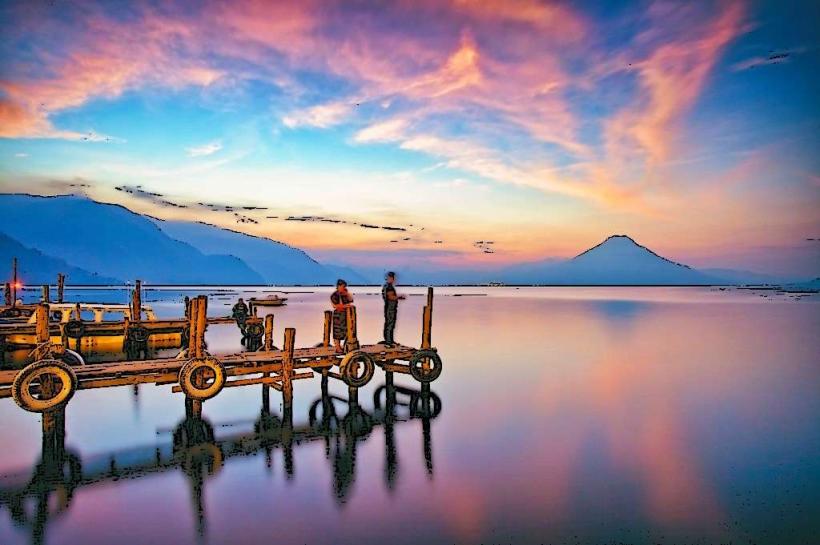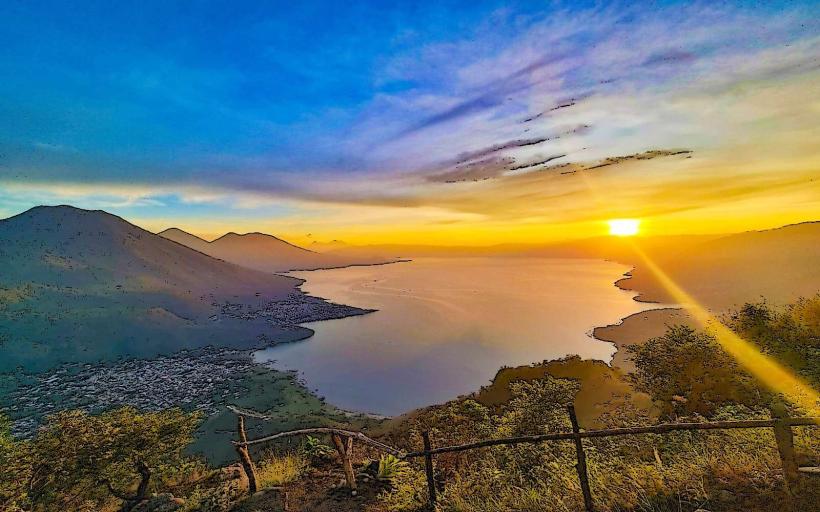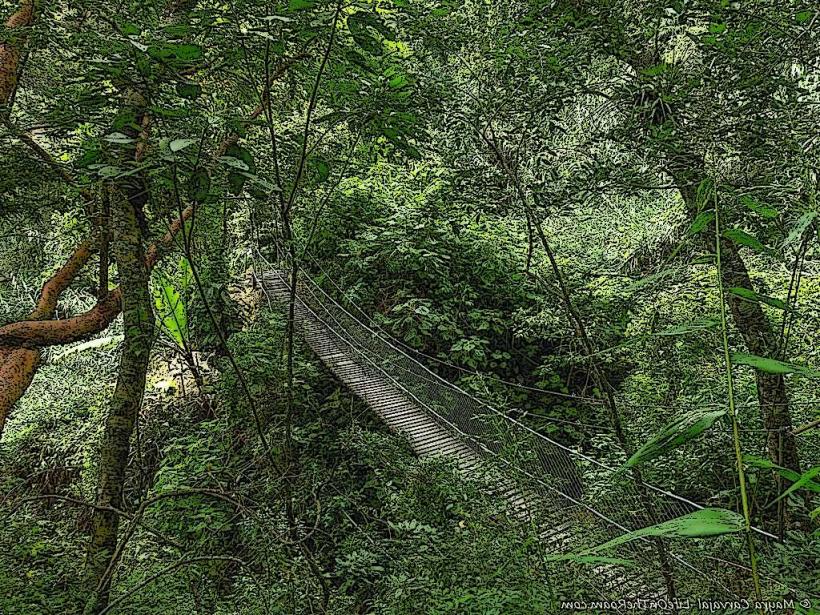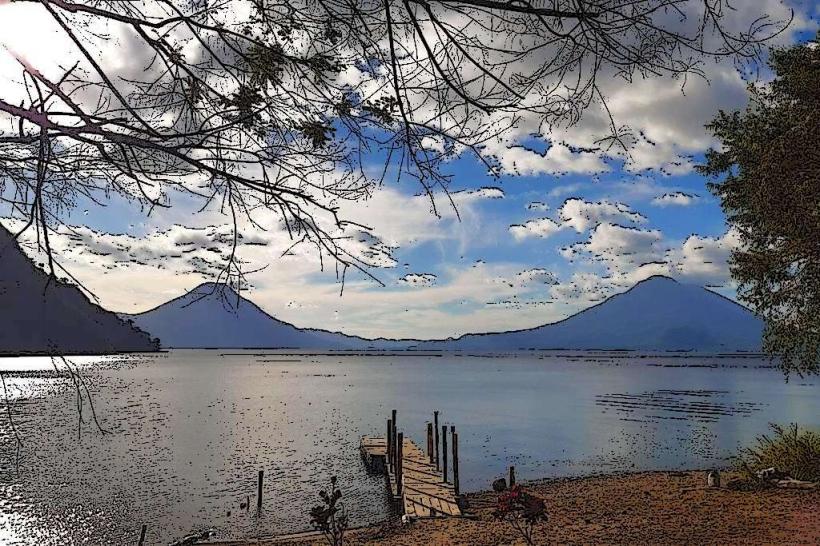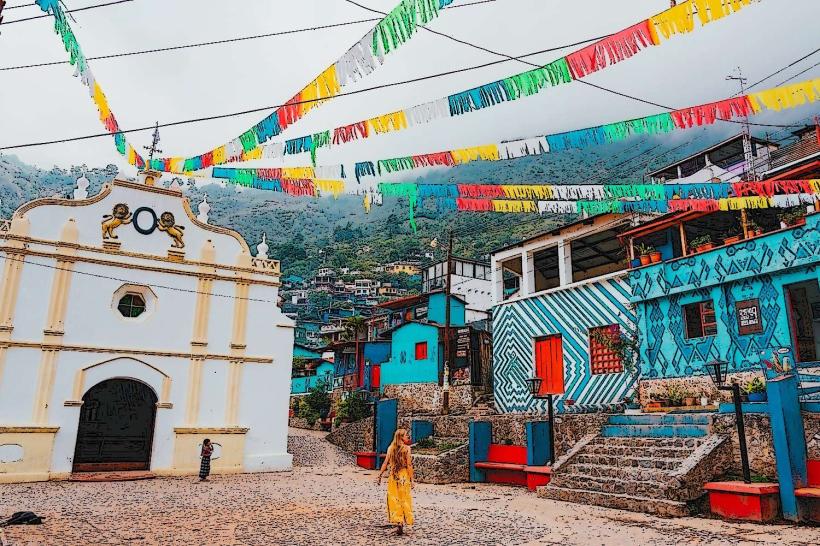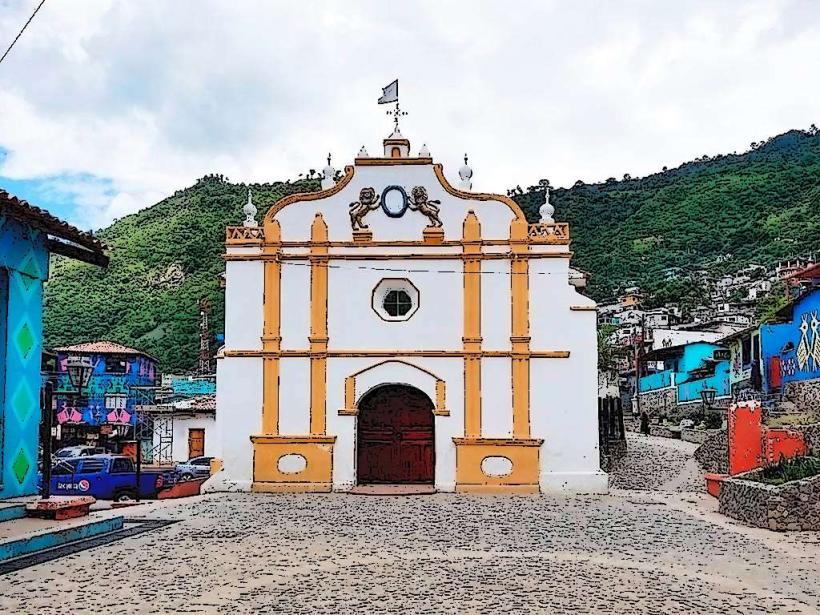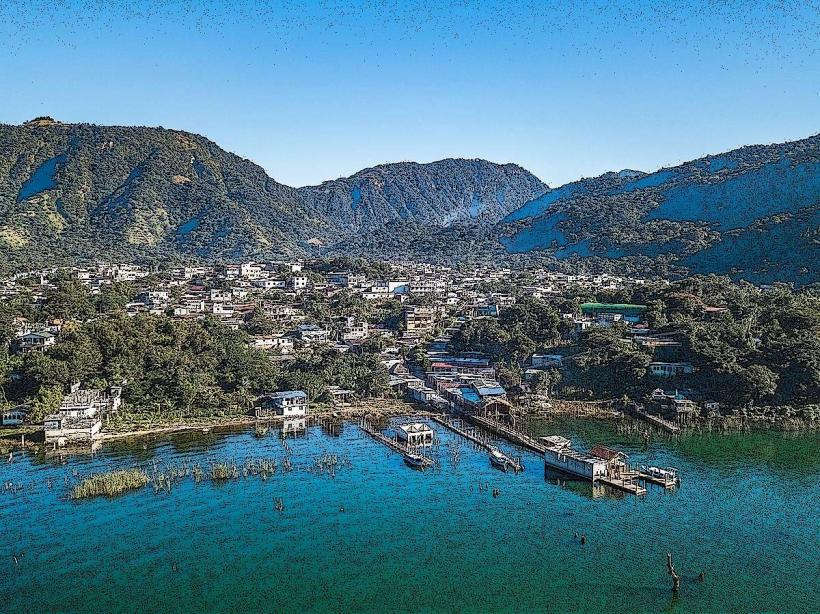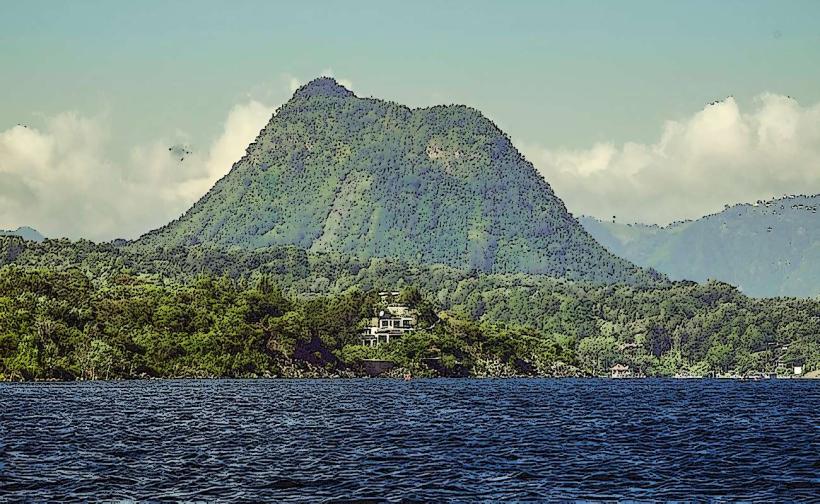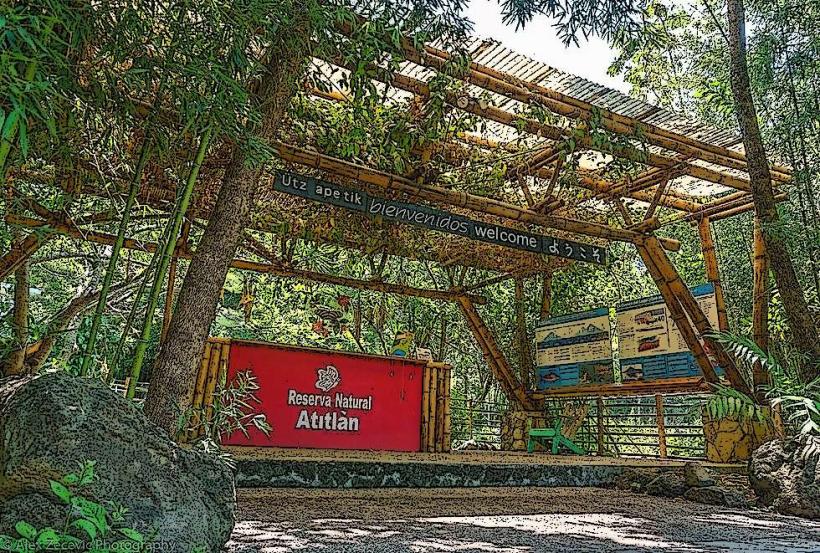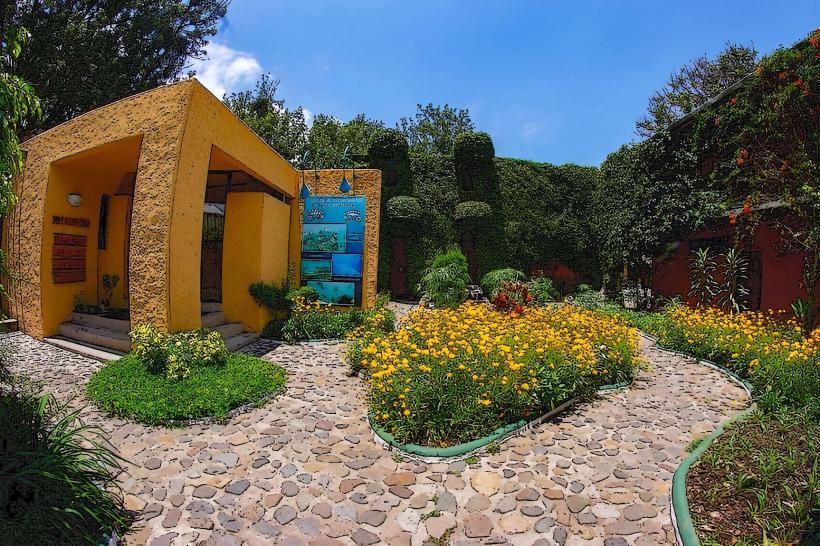Information
City: PanajachelCountry: Guatemala
Continent: North America
Panajachel is a small town located in the Sololá Department in the western highlands of Guatemala. Situated on the shores of the beautiful Lake Atitlán, it is one of the most popular tourist destinations in the country, attracting visitors with its stunning natural scenery, vibrant indigenous culture, and proximity to several indigenous villages around the lake.
Geography and Climate
Panajachel is located at an altitude of approximately 1,500 meters (4,920 feet) above sea level, offering a temperate climate with moderate temperatures throughout the year. The town enjoys pleasant weather, with average temperatures ranging from 16°C (60°F) to 26°C (79°F). It has a mild, temperate climate, particularly when compared to the hotter, lower areas of Guatemala. The rainy season typically lasts from May to October, while the dry season runs from November to April.
The town is set against a backdrop of towering volcanoes, including Volcán Atitlán, Volcán San Pedro, and Volcán Tolimán, which surround Lake Atitlán. The lake itself is often described as one of the most beautiful in the world, offering panoramic views and opportunities for water-based activities such as kayaking, boating, and fishing.
History
Panajachel has a rich history that dates back to the early colonial period, although the area had been inhabited by various Mayan groups long before the Spanish arrived. During the colonial era, the region was part of the Kaqchikel Maya territory. The Spanish built a small settlement in the area, and Panajachel gradually became an important stop for travelers.
In the 20th century, Panajachel began to gain popularity as a tourist destination. Its proximity to Lake Atitlán and the surrounding volcanoes made it an attractive location for those seeking both natural beauty and indigenous culture. The town’s development as a tourist hub accelerated in the 1960s and 1970s when it became a popular destination for backpackers, travelers, and artists.
Today, Panajachel continues to be a vibrant hub for visitors from around the world, drawing tourists not only for its scenic beauty but also for its access to local indigenous villages and cultural experiences.
Urban Structure and Development
Panajachel is a relatively small town, with a population of around 15,000 people. It retains much of its traditional charm, with cobblestone streets, colorful buildings, and a mix of colonial and indigenous architecture. The town has a main street, Calle Santander, which runs through the center and is lined with shops, restaurants, cafes, and hotels catering to the large influx of tourists.
Despite the growth of tourism, Panajachel has managed to preserve much of its local character, with indigenous Kaqchikel Maya people living and working in the town and surrounding areas. Many of the town’s residents are involved in the handicraft industry, creating textiles, jewelry, and pottery, much of which is sold in the local markets.
The town’s waterfront area provides stunning views of Lake Atitlán and is a popular spot for visitors to take photos, relax, or enjoy a boat ride. The lakefront is also home to several hotels, hostels, and restaurants, many of which offer views of the lake and surrounding volcanoes.
Economy
Panajachel’s economy is primarily driven by tourism, with the town serving as the main gateway to Lake Atitlán and the surrounding indigenous villages. The local economy also benefits from the sale of handicrafts, agriculture, and fishing.
- Tourism: As one of the top tourist destinations in Guatemala, tourism plays a major role in the local economy. Visitors come to explore the beauty of Lake Atitlán, hike around the surrounding volcanoes, and visit the nearby indigenous villages such as San Juan La Laguna, San Pedro La Laguna, and Santiago Atitlán.
- Handicrafts: Panajachel is known for its vibrant local markets where visitors can purchase handmade textiles, woven goods, and other traditional Mayan crafts. These products are typically made by the indigenous communities around the lake and are an important source of income for the local population.
- Agriculture: The fertile land surrounding Panajachel is ideal for growing crops such as corn, beans, and coffee. The region is also known for its avocado and vegetable cultivation, which supports the local economy.
Demographics and Culture
The town is predominantly Mayan, with a strong presence of the Kaqchikel Maya people. Many of the local residents speak both Kaqchikel and Spanish, and the traditional Mayan culture plays an important role in daily life.
Panajachel is a center for indigenous culture and traditions, and visitors can experience this through local markets, traditional dress, and the rich cultural practices that have been passed down through generations. The town is also home to a number of Mayan spiritual ceremonies, and many visitors come to participate in these ceremonies or learn about the spiritual practices of the local communities.
In addition to the indigenous culture, Panajachel has a vibrant international community, with expats from Europe, the United States, and other countries who are drawn to the town for its natural beauty, mild climate, and affordable cost of living.
Tourism and Attractions
While the primary draw of Panajachel is its stunning setting on Lake Atitlán, there are several other attractions in and around the town:
- Lake Atitlán: The lake is the centerpiece of Panajachel’s appeal. Visitors can take boat tours to explore the villages around the lake, which each have their own unique culture and history. The villages are often accessible only by boat or by steep hiking trails.
- Volcano Hikes: The surrounding volcanoes, including Volcán Atitlán, Volcán San Pedro, and Volcán Tolimán, offer excellent hiking opportunities for adventure travelers. The hikes vary in difficulty, but the views from the top are some of the most spectacular in Central America.
- Cultural Events and Festivals: Panajachel hosts several cultural festivals throughout the year, celebrating both local indigenous traditions and Catholic holidays. The town also hosts art exhibitions, music performances, and other events that attract international visitors.
- Reserva Natural Atitlán: This nature reserve located just outside of Panajachel offers trails, waterfalls, and opportunities to explore the local flora and fauna. It's a great place to enjoy nature and take in panoramic views of the lake.
- Sololá: A nearby town, Sololá is known for its traditional market, where visitors can find local produce, textiles, and crafts. The town offers insight into the rural life of the indigenous communities in the highlands.
Transportation
Panajachel is well-connected to other parts of Guatemala, especially in the western highlands. The town can be reached by car, bus, or shuttle from Guatemala City and other major cities. The journey from Guatemala City to Panajachel takes approximately 3-4 hours by bus.
- Public Transportation: Panajachel has an efficient public transportation system, with buses and shuttles regularly traveling between the town and other major locations in the region. Most visitors arrive by shuttle bus or private car.
- Boats: The most popular mode of transportation around Lake Atitlán is by boat. Several boat operators offer transport to and from nearby villages, as well as guided tours of the lake. The boats are typically small, traditional motorboats that can carry anywhere from 5 to 15 people.
Social and Security Situation
Panajachel is generally considered a safe town for travelers. However, like many tourist destinations, petty crime, such as pickpocketing and theft, can occur, particularly in crowded areas such as the market or on boats. Visitors are advised to take usual safety precautions, such as securing valuables and avoiding walking alone at night.
The town has a relatively low crime rate compared to larger urban centers, and it is generally a peaceful place. The local authorities and businesses are accustomed to dealing with tourists and work to ensure that the town remains safe and welcoming.
Environmental Concerns
Panajachel, being situated on Lake Atitlán, faces environmental challenges related to water pollution and deforestation. The rapid growth of tourism, along with agricultural runoff, has led to concerns about the lake’s water quality. Efforts are being made to address these issues through improved waste management and conservation initiatives.
- Pollution: The growth of tourism has increased waste production, and some efforts are being made to improve waste management and reduce pollution in Lake Atitlán.
- Deforestation: Deforestation around the lake and the surrounding volcanic areas is a concern. Conservation efforts are underway to preserve the area’s natural beauty and prevent further degradation.
Conclusion
Panajachel is a picturesque and vibrant town that offers a perfect blend of natural beauty, indigenous culture, and modern tourism infrastructure. With its stunning location on Lake Atitlán, surrounded by volcanoes, and its proximity to traditional Mayan villages, it is a must-visit destination for anyone traveling to Guatemala. Whether you're seeking adventure, culture, or relaxation, Panajachel provides an unforgettable experience in one of the most beautiful settings in Central America.

